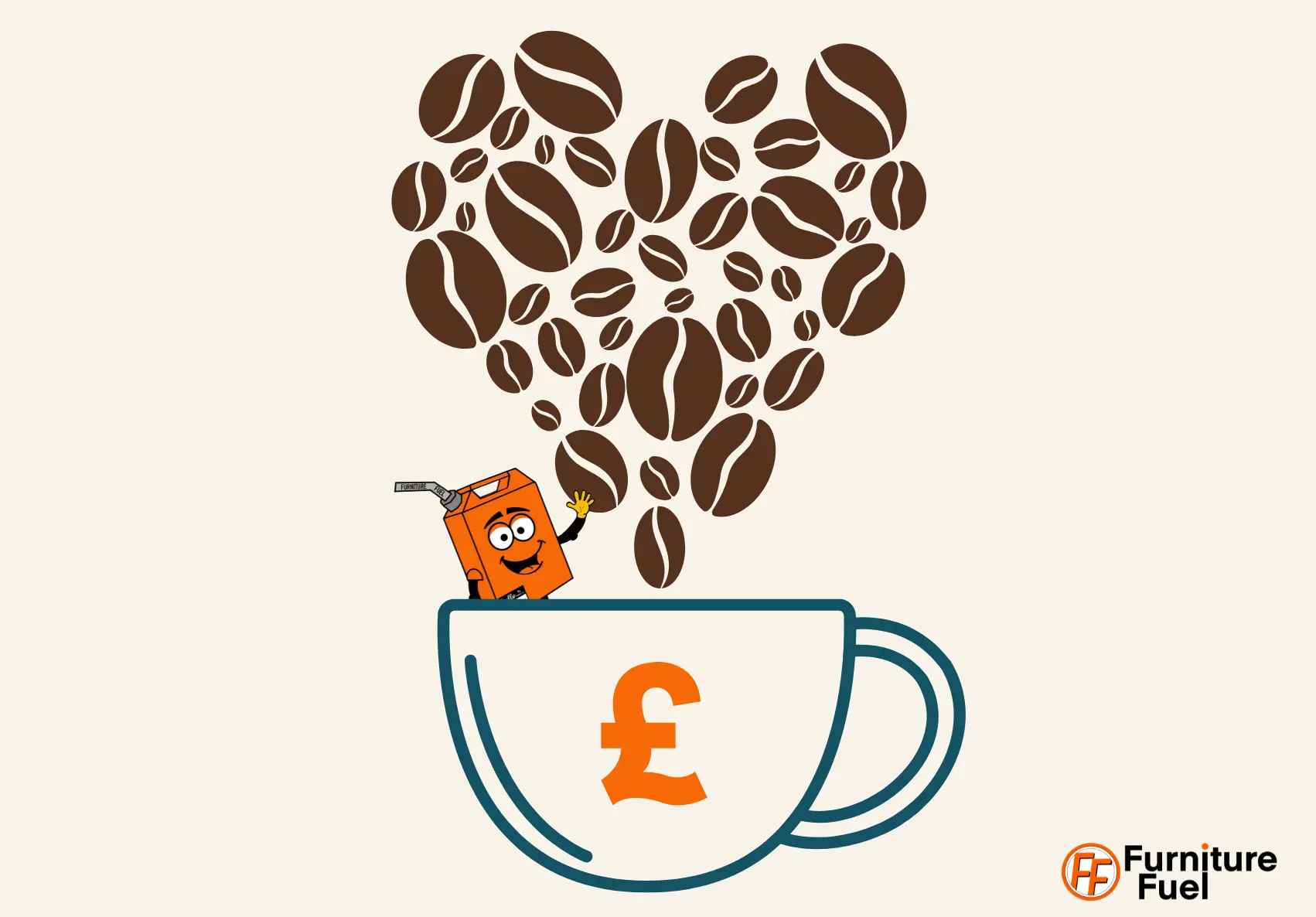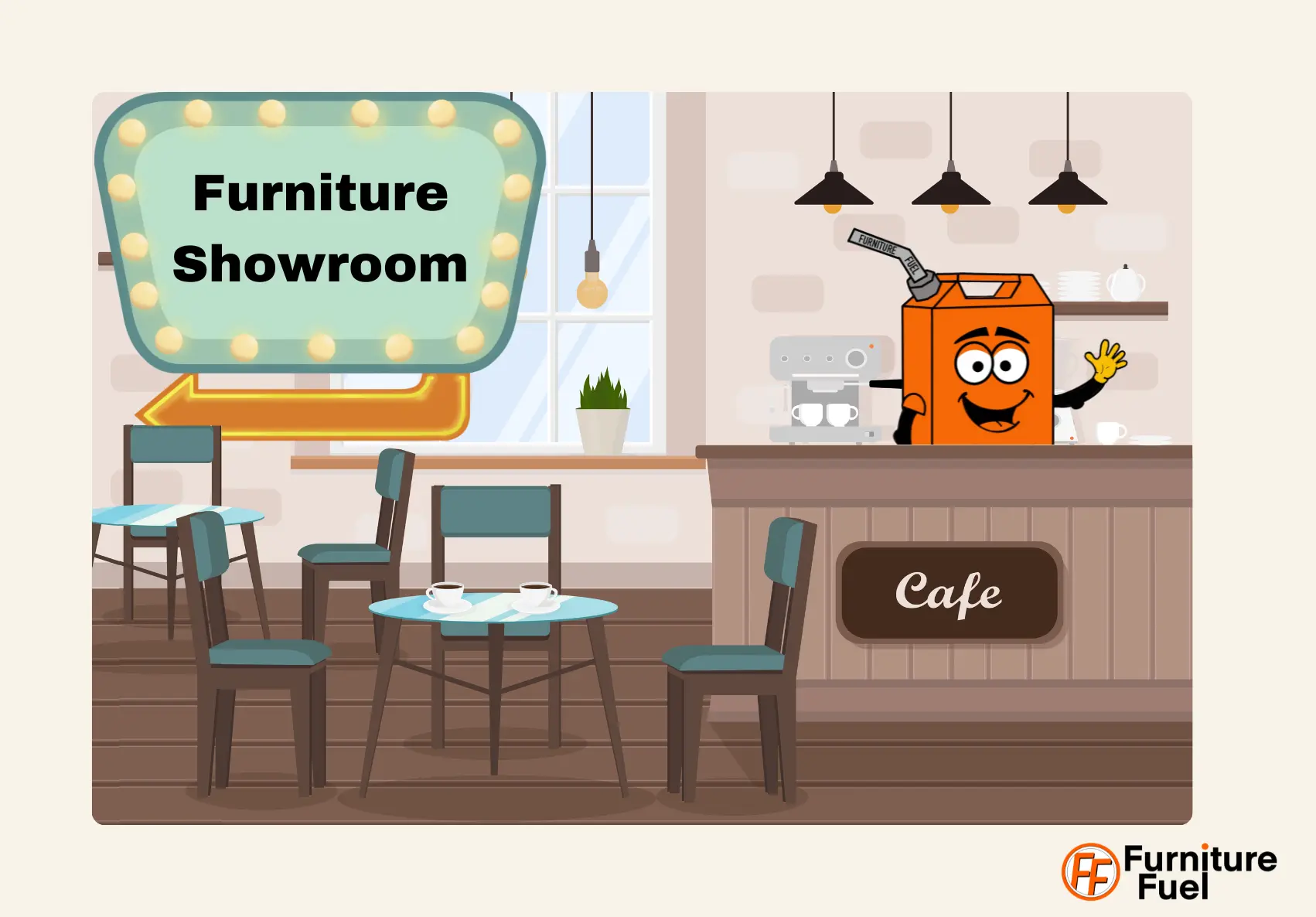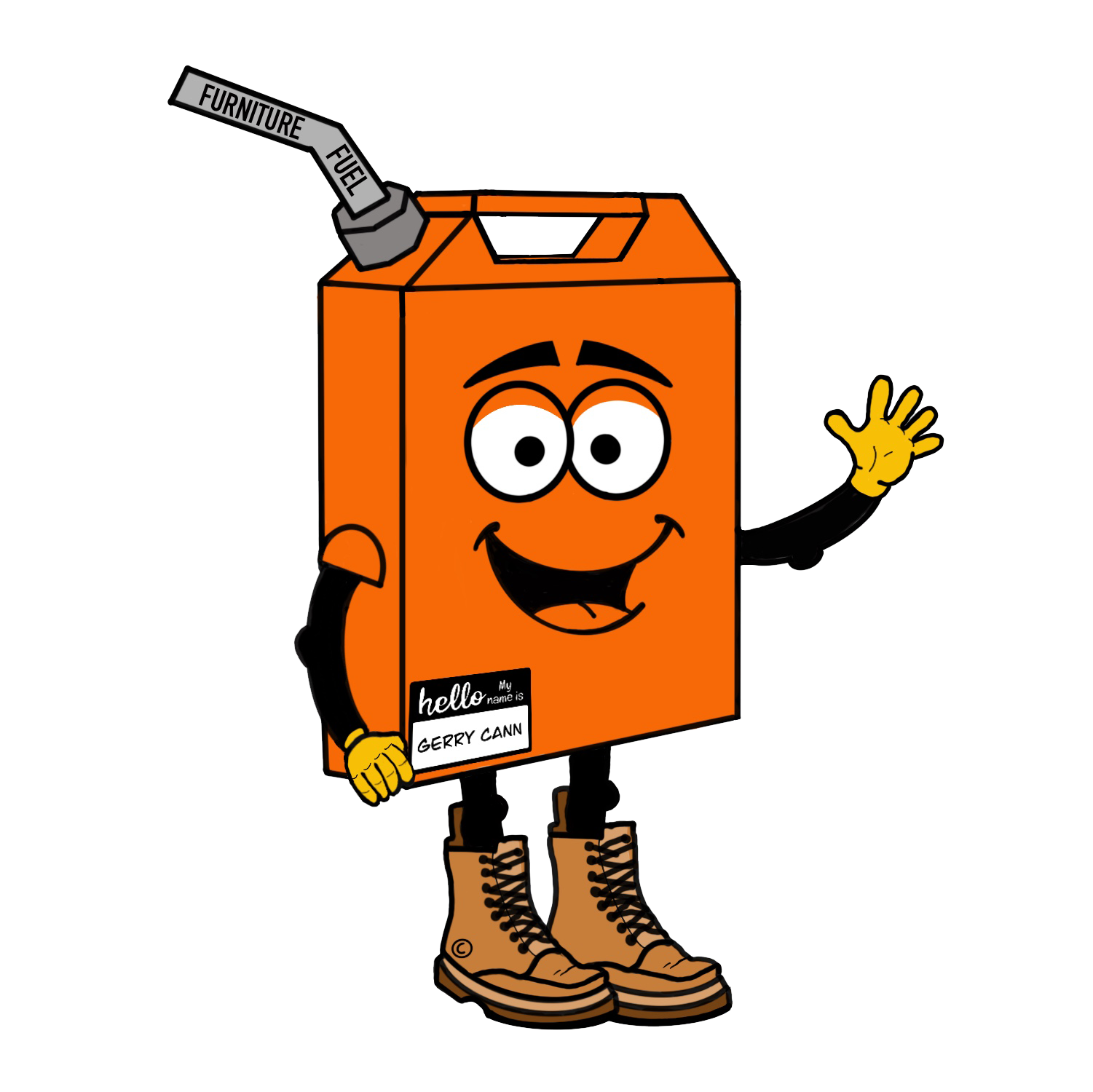Brewing Success: Can a Cup of Coffee Really Increase Furniture Sales?
Jack Young
- Last Updated: 21 February 2025

Disclaimer: In the following article, we will explore research on the relationship between caffeine and purchasing behaviour. It’s important to emphasise that we strongly oppose any unethical practices that could be alluded to by the findings of the research discussed.
It’s important to clarify that the highlighting of text within this article is purely for emphasis and readability. We want to explicitly state that this emphasis does not imply any recommendation or endorsement. Our goal is to provide clear and informative content without suggesting any unethical practices.
Table of Contents
Can Caffeine Increase Sales - Key Takeaways
- Aroma Matters: The visual appeal of coffee machines and the scent of brewed coffee could enhance the store’s appeal.
- Impact of Caffeine on Shopping Behaviour: Offering coffee in retail environments can significantly influence consumer behaviour, leading to increased spending and impulsivity, especially for high-hedonic products.
- Moderating Factors: The effects of caffeine on shopping impulsivity may vary based on individual coffee consumption habits, with light and moderate coffee drinkers showing more pronounced responses compared to heavy coffee drinkers.
Why Should You Consider Offering Coffee to Customers
The pandemic triggered a dramatic change in how consumers buy products and services. It happened at an accelerated pace that caught many business owners off guard.
For brick-and-mortar stores, online selling went from a useful addition to an essential lifeline. It was no longer a luxury but a necessity for survival.
This leaves business owners asking the big question: Is online shopping here to stay as the “new normal”?
The future of retail is a complex . While online shopping is undoubtedly here to stay, there isn’t a one-size-fits-all answer. We’ll explore the complexities of online vs. in-store shopping in a future article.
For now, one thing is clear—physical stores still matter. In-store browsing and purchases remain a crucial part of how we shop, especially for significant investments like furniture.
But in a world crowded with me-too products and businesses, your store must be a place people want to visit—not just somewhere they have to go.
It needs to be more than a transaction. Your furniture store needs to be an experience.
Retail is already evolving in this direction. Businesses aren’t just selling products; they’re creating moments worth remembering—or at least, they should be.
Social media is filled with people posting about shops that stimulate them. They’re not just buying—they’re experiencing, capturing and sharing those that stand out online.
So, how can you make your business more of an experience and boost sales?
Well, one way may lie in what some call the nectar of the gods: Coffee!

Me-too products and businesses refer to offerings that mimic or imitate existing products or business models in the market without significant differentiation or innovation. These products or businesses often lack unique features, value propositions, or competitive advantages compared to their counterparts.
Can Coffee Create a Welcoming Atmosphere?
Have you ever walked into a café and instantly felt at ease, just from the aroma of fresh coffee? Scents have a powerful impact on how we feel, shaping our emotions and even influencing our decisions—often without us realising it.
Retailers have long used scent to enhance the shopping experience. Some supermarkets even pipe the smell of fresh bread into the air because it has been shown to increase sales. The reason? Scent has a direct path to the brain’s emotional and memory centres, which is why a familiar aroma can instantly transport us to another time and place.
The smell of coffee works in the same way. It can evoke warmth, comfort, and even nostalgia—perhaps reminding someone of mornings with family or lively conversations with friends. This emotional connection can make a space feel more inviting, putting customers at ease and encouraging them to linger.
Would your customers feel differently about your store if they were greeted with the rich aroma of fresh coffee? Could it create a subconscious sense of familiarity that sets you apart from the competition?

If we agree that the smell of coffee on its own could add to the shopping experience for consumers, what about the actual effects of caffeine on the shopping experience and spending?
The findings below were surprising.
What Is the Impact of Offering Coffee to Shoppers?
We initially thought that the caffeine found in coffee would create a fight-or-flight response and make the consumer less likely to purchase, but our assumptions were wrong.
We looked at a research article titled “Caffeine’s Effects on Consumer Spending”, first published online on 11th June 2022.
The research article and the studies conducted within were to test the two hypothesises, which were:
H1: Caffeine consumption leads to greater shopping impulsivity in terms of a higher number of items purchased and higher overall spending.
H2: The effect predicted in H1 is mediated by caffeine-induced energetic arousal.
They also proposed “that the effects of caffeine consumption predicted in H1 will be stronger for high-hedonic products than for low-hedonic products”.

Hedonic is related to the experience of pleasure or happiness. In consumer behaviour and product evaluation, hedonic value refers to the emotional or sensory pleasure derived from a product.
Studies conducted.
A series of studies were conducted in retail stores and lab settings, and the research investigated the influence of caffeine consumption on shopping impulsivity and spending.
Participants were randomly assigned coffee (caffeine) or decaffeinated coffee and sometimes water as a control condition to rule out potential placebo effects.
The studies considered hedonic product categories, individual coffee consumption habits, and potential global implications.
Below are the summarised methods and key findings from each study. These have been made as concise as possible for ease of reading. However, doing so may take away from some of the complexities in the research, so it is recommended that you read the complete article and studies done for yourself, which can be found here.
Study 1: Effects of Caffeine Intake on Purchases at Retail Stores.
In Study 1, a field experiment was conducted at a major French retail chain that sold various household goods.
The participants were divided into two groups, each experiencing a different condition: caffeinated or decaffeinated espresso.
An espresso station at the store’s entrance provided complimentary coffee to customers, with approximately 500 participants evenly split between conditions.
Caffeine content was explicitly labelled, and the data was collected over four days.
Results indicated that customers who consumed a caffeinated espresso purchased more items and spent more compared to those who consumed decaffeinated espresso.
The heightened arousal induced by caffeine contributed to the increase in the number of items purchased, supporting the hypotheses.
Notably, the study prompted discussions about whether observed effects were due to caffeine’s stimulating properties or influenced by placebo effects.
Study 2: Process Evidence for the Effects of Caffeine on Spending
In Study 2, researchers aimed to replicate the findings of Study 1 in a more controlled field setting.
The study employed a between-subjects design with two experimental conditions (separated into two groups, with different conditions): participants consumed either caffeinated espresso or water.
The experiment was conducted in a department store in a major Spanish city. Ninety female participants were randomly assigned to either the “caffeine” or the “water” group.
After consuming either caffeinated espresso or water, participants spent two hours shopping in the store and completed a short survey.
The main findings revealed that participants who consumed caffeinated espresso spent more during their shopping trip compared to those who drank water.
Additionally, the study measured energetic arousal and pleasure.
Participants in the caffeinated group reported higher levels of arousal and pleasure than those in the water group, suggesting a positive influence of caffeine on these states.
The study demonstrated that caffeine-induced energetic arousal influences spending behaviour during the shopping experience. A floodlight analysis further explored the impact of caffeine on spending based on participants’ daily coffee consumption.
In summary, Study 2 supported the idea that consuming caffeinated beverages before a shopping trip is linked to increased spending, with arousal being a significant factor in this relationship.
Study 3: Field Study Examining Caffeine Effects for High- Versus Low-Hedonic Products
Study 3, a field experiment conducted in a major French retail chain, explored the impact of caffeine on shopping behaviour.
Participants were offered caffeinated espresso, decaffeinated espresso, or water. Those who consumed the espresso exhibited an increased spending and purchased more items.
The study also found that caffeine’s effect on spending was more pronounced for high-hedonic products than low-hedonic ones, providing further insights into caffeine’s subtle influence on consumer decision-making.
Further examinations, such as floodlight and Johnson–Neyman analyses, explored the relationship among caffeine, daily coffee intake, and hedonic scores.
This in-depth investigation enhanced the understanding of how caffeine influences shopping impulsivity in authentic retail environments, providing a clearer perspective on the relationship between these variables.
These findings set the stage for subsequent investigations in controlled lab settings (Study 4).
Study 4a: Caffeine Effects for High- Versus Low-Hedonic Products
In Study 4a, researchers conducted a controlled lab experiment involving 209 students to investigate the impact of caffeine on shopping behaviour, specifically focusing on high- and low-hedonic products.
Participants were randomly assigned to consume caffeinated coffee or water and presented with product sets representing high or low-hedonic categories.
Results from a Poisson log-linear model revealed a significant main effect of caffeine consumption on the number of items purchased, indicating higher purchases when coffee was consumed.
Additionally, there was an effect on product type, with higher purchase amounts for high-hedonic products. While the interaction effect was not significant, follow-up tests indicated that caffeine’s influence was more pronounced for high-hedonic products, supporting the hypothesis that caffeine enhances shopping impulsivity, particularly for products associated with higher hedonic appeal.
Study 4b: Role of the Perceived Hedonic Level of Product Mix
In Study 4b, the researchers explored how caffeine, using tea as the caffeinated beverage, influenced purchasing behaviour and how it was affected by the perceived hedonic value of a product mix.
Unlike previous studies, this investigation employed a within-subjects design, maintaining the same product mix for all participants.
Undergraduate students at a U.S. university were randomly assigned to caffeinated or noncaffeinated beverage conditions.
The product assortment, representing a relatively high hedonic category, was displayed on a website, and participants indicated the number of items they would purchase and rated the perceived hedonic value.
A Poisson log-linear regression revealed a main effect of consuming caffeinated vs. noncaffeinated beverages on the number of items chosen, with caffeine-enhancing purchases.
The perceived hedonic value did not directly influence the main effect.
However, incorporating perceived hedonic values as a covariate (a covariate is a variable that supports or reinforces the primary variable) strengthened caffeine’s main effect.
A floodlight analysis indicated that caffeine’s impact on the number of items chosen was more pronounced at higher perceived hedonic values. This supports the idea that the hedonic characteristics of products interact with caffeine to influence shopping impulsivity.
The Impact of Caffeine on Spending: Key Findings from the Studies
Studies consistently show that caffeine influences shopping behaviour, making people more impulsive. Whether in retail stores or controlled lab settings, those who consume a caffeinated beverage tend to buy more items and spend more overall.
This effect is linked to dopamine, the brain’s “feel-good” neurotransmitter, which caffeine helps release. Higher dopamine levels are associated with greater impulsivity and reduced self-control, making purchases feel more rewarding in the moment.
Caffeine also increases excitement and alertness within a specific dosage range. This heightened energy can narrow focus and disrupt careful decision-making, leading to quicker, more impulsive choices. It also makes pleasurable aspects of products stand out more, increasing the likelihood of a purchase.
However, the effects depend on the amount of caffeine consumed. While moderate doses encourage impulse buying, excessive amounts can cause nervousness and tension, which might make shoppers more hesitant.
Interestingly, the impact varies by caffeine tolerance. Light and moderate coffee drinkers are the most affected, while heavy coffee drinkers show a weaker response—possibly because their bodies are more accustomed to caffeine’s effects.
Hedonic Products

Hedonic is related to the experience of pleasure or happiness. In consumer behaviour and product evaluation, hedonic value refers to the emotional or sensory pleasure derived from a product.
The research also revealed that caffeine’s effects are not uniform across all products.
High-hedonic items, which provide enjoyment or emotional pleasure, respond more strongly to caffeine-induced impulsivity. In contrast, low-hedonic products, focused primarily on function, show a weaker reaction.
High-hedonic products offer more than just functional value—they bring pleasure, joy, or positive emotion. Although not directly cited in the research, furniture could be considered high-hedonic. It is often bought to satisfy needs beyond the utilitarian purpose.
If furniture is categorised as high-hedonic, this suggests that caffeine could amplify impulsivity and purchase intentions. In other words, consumers may be more likely to make impulsive furniture purchases when caffeinated, especially if the furniture brings immediate pleasure.
However, if the furniture is more utilitarian or functional, the effect of caffeine on impulsivity and purchase intentions may be weaker.
Ultimately, whether this holds true depends on how you classify furniture in terms of its hedonic value.
As the article suggests, this has significant implications for retailers. The availability of caffeinated beverages in-store could notably impact consumer spending. Retailers may benefit from facilitating caffeine consumption before or during the shopping experience.
Should You Offer Coffee to Your Customers?
Although you may think that supplying coffee to customers in-store is, based on the article and the research discussed, something you will implement, there are other factors to consider than just the impact of increased spending.
Potential Concerns
If a consumer who has already consumed coffee enters your store and you provide them with more, this could induce a state of tension.
Both adrenaline and cortisol are involved in the body’s stress response. While moderate levels of stress can enhance performance, excessive stress can impair cognitive function and decision-making. High levels of cortisol resulting from chronic stress or excessive caffeine consumption may lead to heightened anxiety and impulsive decision-making, which could negatively affect consumer behaviour.
Considerations of Buyer’s Remorse
Although not mentioned or, the effects studied in the research paper. It is crucial to consider buyer’s remorse as an outcome of the increased impulsivity of spending due to caffeine intake.
Energetic arousal induced by caffeine may result in heightened enthusiasm and impulsivity during the shopping experience.
Individuals under the influence of caffeine might be more prone to making spontaneous and impulsive purchases, driven by the immediate pleasure associated with high-hedonic products.
However, buyer’s remorse, the feeling of regret or anxiety after making a purchase, can stem from a post-purchase cognitive process.
It often occurs when individuals reflect on their buying decisions and perceive a misalignment between their expectations and the actual value or utility of the purchased item.
In the context of caffeine-induced energetic arousal, buyer’s remorse could potentially occur if the individual, after the effects of caffeine wear off, re-evaluates their impulsive purchases and perceives them as impractical or unnecessary.
It’s essential to recognise that the likelihood of buyer’s remorse is individual-specific and influenced by factors such as personal preferences, financial considerations, and the perceived value of the purchased items.
While caffeine-induced impulsivity may contribute to impulsive buying, the presence and intensity of buyer’s remorse depend on the individual’s post-purchase evaluation and reflection.
Additional Consideration for Your Business
Liability and Health Concerns:
If you’re offering coffee in your store, it’s essential to address potential liability issues. Consider the following:
- Who is responsible if coffee is spilt on furniture? You or the customer? Who is liable may be a source of conflict between you and the customer.
- Are there appropriate disclaimers or warnings in place? Customers should be aware of any risks associated with coffee consumption in the store.
- Are there health and safety regulations you need to comply with? Ensure you follow any relevant rules for serving coffee in your store.
Safety and Hygiene:
Keeping the shopping experience safe and clean is a priority:
- What measures are in place to prevent accidents like burns or spills? It’s crucial to minimise the risk of injury in areas where coffee is served.
- Are there designated coffee zones? Creating specific areas for coffee consumption can reduce spill risks and keep the main shopping floor clean.
- How is hygiene maintained in the coffee-serving area? Keeping the coffee station clean will contribute to a positive customer experience and safeguard your furniture.
Customer Interaction:
Offering coffee can enhance the shopping experience, but it’s important to think about the practical side:
- How might holding coffee affect a customer’s ability to interact with furniture? Consider how customers might navigate the space with a cup in hand. For instance, can they open drawers or lift furniture comfortably with coffee in tow?
- Where can customers place their coffee while engaging with the furniture? Thoughtful design can make it easier for customers to enjoy coffee without interrupting their shopping flow.
Staff Training:
Your team will need to be prepared to handle coffee-related issues:
- Have staff been trained to manage potential spills or accidents? A clear protocol for handling coffee-related issues will ensure prompt and professional responses.
Addressing these considerations will help you better understand the challenges involved. But it’s not just about overcoming obstacles—could coffee become a key factor in attracting new customers to your business?
Could a Coffee Shop or Section Be an Alternative?

While incorporating a coffee shop into your retail store might not have crossed your mind, if you have the necessary space, capital, and expertise, a coffee shop could significantly enhance the customer experience and be a source of additional income.
One key benefit of adding a coffee shop is the enhanced customer experience it can offer. A coffee shop provides more than just a beverage—it creates an atmosphere that encourages customers to linger, increasing dwell time. When customers spend more time in the store, they have more opportunities to engage with your products, which can lead to higher sales. The presence of a coffee shop can also provide significant brand differentiation. In contrast to stores that only offer simple coffee machines, having a full coffee shop gives your store a unique edge that can make it more appealing to customers.
A coffee shop can act as a destination within your store, making it an additional traffic acquisition source. Customers who come for coffee may also explore other areas of the store.
Limitations to Consider for an In-Store Coffee Shop
However, before considering the idea of a coffee shop, it’s essential to consider a few limitations. Whilst this is not an extensive list, these are the main limitation considerations.
First and foremost, space and location are crucial. You must have sufficient space within the store, and it needs to be in a location with good foot traffic. A poorly positioned or cramped coffee area may not attract customers or provide a comfortable experience.
Running a coffee shop comes with operational costs, including the need for staff, equipment, and inventory. You’ll need to assess whether the expected revenue will justify these costs. Additionally, staffing and training are key to the success of a coffee shop. You’ll need to either find qualified staff or invest in training.
Furthermore, licensing and regulations should not be overlooked. Local laws and regulations may impact your ability to serve coffee, and you’ll need to ensure you meet all the requirements.
While the aroma of coffee can create a welcoming atmosphere and caffeine may influence spending, it’s important to acknowledge its limitations and ethical considerations. By weighing these factors carefully, you can determine whether a coffee shop would genuinely enhance the customer experience in your furniture store. Rather than relying solely on the effects of caffeine, the next section explores a range of strategies to build genuine customer relationships and trust—creating a truly memorable shopping experience.
How to Create Memorable Experiences Beyond Coffee
While the aroma of coffee can certainly enhance the shopping experience, creating lasting memories for your customers requires more than just a caffeine boost. A truly enjoyable and memorable visit to your furniture store comes from a combination of thoughtful, customer-centric strategies that build engagement and trust. While there’s no single formula for success, and every store will have its own approach, the following are some key areas worth considering.
One of the most important aspects is having knowledgeable, approachable staff who can assist customers, provide valuable product insights, and guide them through their purchasing decisions. A well-trained team not only answers questions but also enhances the shopping experience by making customers feel informed and valued. Beyond staff interactions, the in-store environment itself plays a crucial role. Interactive displays and virtual tools can help customers visualise products in their own space, making the shopping process more immersive and enjoyable. Clear and concise signage also contributes to a seamless experience, helping customers easily navigate the store and find exactly what they need without frustration.
Trust and convenience are key factors in customer satisfaction. A flexible return policy reassures customers that they have a safety net should they change their minds, making them more confident in their purchases. At the same time, an active online presence allows customers to browse products, check availability, and make informed decisions before they even step into the store. This bridges the gap between online and in-store shopping, ensuring a smooth customer journey.
By combining these strategies, you can create a shopping experience that goes beyond a single transaction, creating customer loyalty and ensuring your store remains a destination of choice. The goal isn’t just to sell furniture—it’s to provide an experience that adds real value at every touchpoint, making customers eager to return.
Can Coffee Increase Sales?
Research from the studies discussed indicates that caffeine consumption can lead to increased impulsivity and spending, which raises ethical concerns that require thoughtful consideration.
Ultimately, the decision to offer coffee in a retail space shouldn’t be taken lightly. It is crucial to weigh the potential benefits against the limitations and concerns.
If you invest in a coffee machine to get your customers to buy more, then the key considerations of this “benefit” to the customer will be overlooked.
Alternatively, exploring the strategies presented in the “Beyond Coffee” section of this article can help create memorable experiences that benefit customers and businesses in a sustainable and responsible manner.


